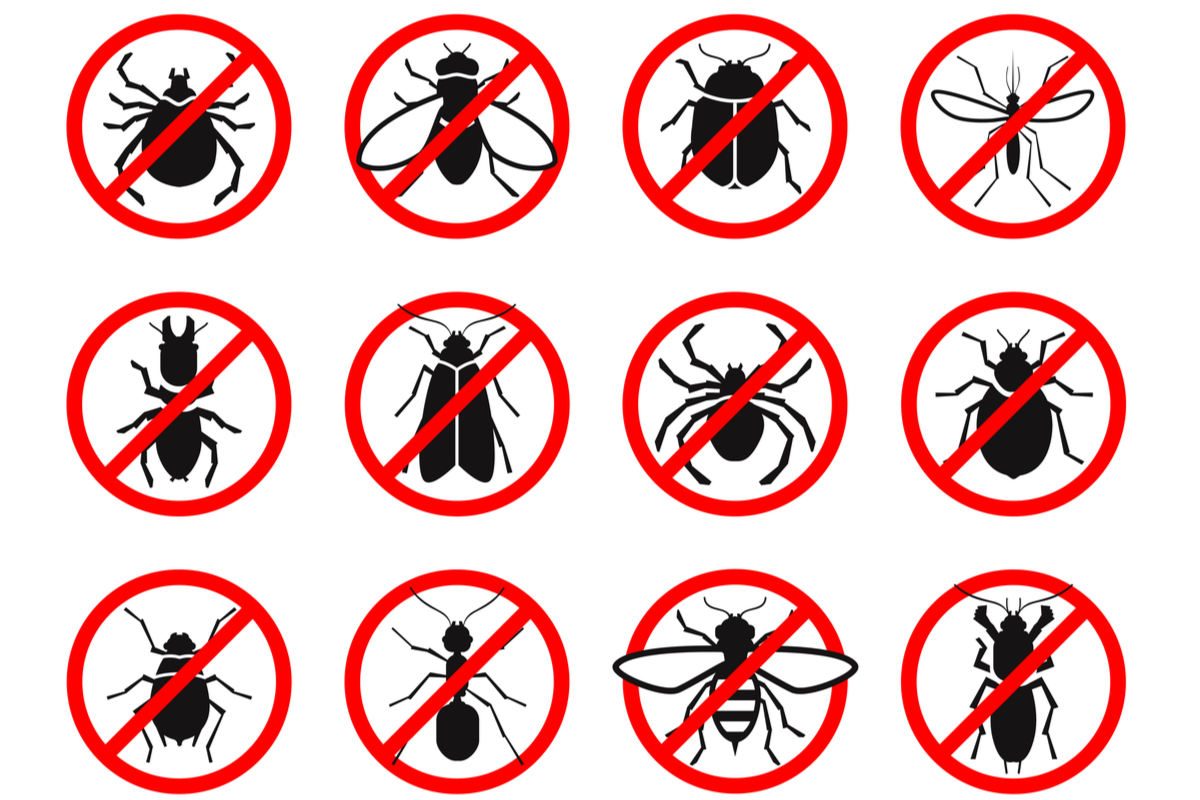There are countless things that can go wrong in a hoarding situation. Not only is it unsightly, but hoarding situations also breed problems like diseases, structural damage, and emotional distress. The most disturbing part of hoarding situations is the possible pest infestation.
In a normal situation, pest-related risks are not incredibly dangerous or destructive. In a hoarding situation, however, these risks grow exponentially. The most common types of pests you’ll see in a hoard are flies, cockroaches, rodents, spiders, fleas, and bed bugs. The risks of an infestation by one of them can include structural damage and illnesses like salmonella, E. coli, typhoid fever, and tuberculosis. The majority of these pest-related illnesses cause damage to pulmonary and digestive systems.
It’s important to understand the dangers that pests bring with them when they invade a hoarding situation because they can turn a massive pile of objects into a biohazard. Once infestation occurs, a lot of the items in the hoard will become useless. And once the clean-up is done, a lot of the pests may come back unless they are completely eliminated. This is why professional cleaners are the only ones equipped to handle a hoard once it has been infested.
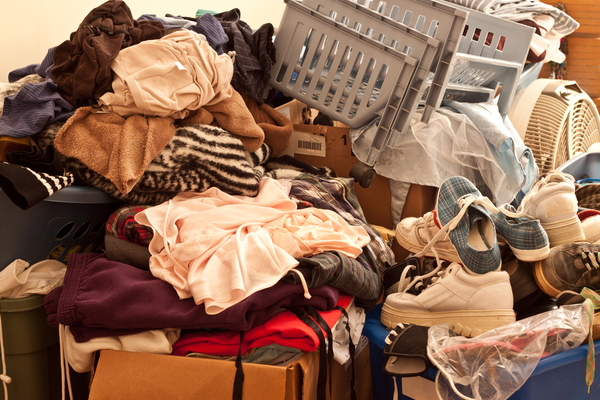 What Causes Infestation in a Hoarding Situation
What Causes Infestation in a Hoarding Situation
Even without pests, hoards can damage structures because proper maintenance and repairs become impossible to notice. Once there are damages to windows, doors, walls, and foundations, houses become very easy to access.
Once they’re inside the hoarder house, pests have an abundance of resources available to them.
The first thing they need is shelter. Since the occupant refuses to throw things away, objects pile up and create an unlimited number of places for pests to hide.
The pileups also include unsealed and expired food that will bring in pests by the droves. Once decomposition sets in other types of pests will be attracted to the hoard.
Lastly, unmaintained houses may have leaky or broken pipes which quickly become a regular water source for a lot of different pests.
The Risks Associated with The Most Common Hoard Pests
The following list consists of pests that are most likely to be present in a hoarding situation. They each have their own damaging tendencies and health risks to humans. All of these pests must be eliminated for the professional cleaning process to be completed and for the area to be safe again.
Rodents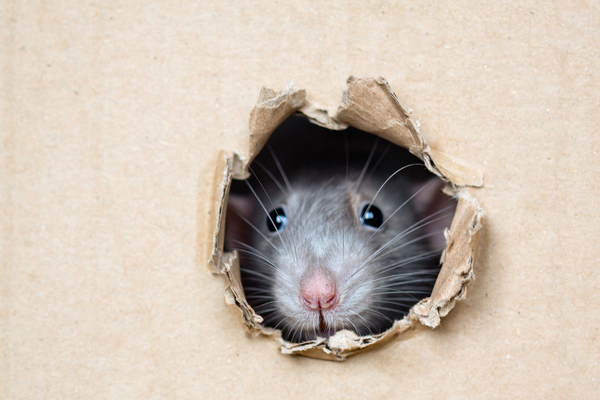
Rodents are very common visitors to hoarding sites. They love to chew on paper, feed on the abundance of food, and make nests in one of the endless hiding spots available. They can even bring fleas along with them.
Unfortunately, there are a host of dangers to humans and structures that come from rodent infestations alone.
As most people know, rodents love chewing on all types of things. They have a fondness, though, for electrical wires. If they chew through the wrong ones there is a high risk of fire because there is so much flammable material in the surrounding area.
Any pest that lives in a hoard leaves behind its own set of health risks. Rodent waste is extremely dangerous and can infect people with hantavirus pulmonary syndrome, leptospirosis, salmonella, and arenavirus, to name a few.
Cockroaches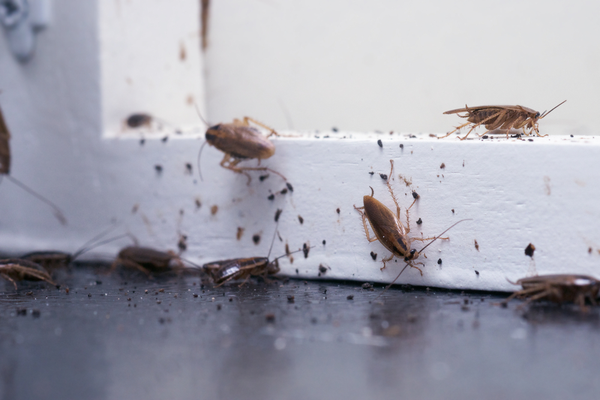
Hoards are prime locations for roaches because they are really easy to get into and they provide food, shelter, and water.
As a general rule, any place that breeds mold is attractive to cockroaches. Since occupants aren’t throwing anything out, moisture builds all around different objects and surfaces making both mold and infestation a strong possibility.
Not only are they unnerving, but cockroaches are also dangerous to humans. No matter where they go, they leave behind waste, dead skin, digestive fluid, and empty eggshells.
Their waste carries diseases like E. coli, sepsis, digestive problems, salmonella, typhoid fever, and many more. In a hoard, a vast number of surfaces and objects will become contaminated from roaches.
Respiratory problems can also be triggered by roaches. The saliva that they leave behind everywhere contains a lot of allergens that cause symptoms like itchy eyes and sneezing, among other things.
People with asthma are especially vulnerable and are at an increased risk of an attack if there is a roach infestation. This is even more serious for children and those with severe respiratory problems.
Flies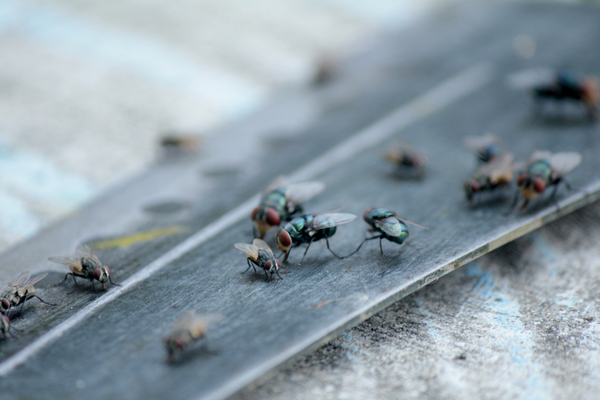
Flies flock to hoarding situations because they are hotbeds for decomposition. Flies are fond of any rotting organic matter like animal carcasses or expired fruit but will consume just about anything.
Feces of any kind, fruits, vegetables, meat, milk, and sugary foods are all attractive to flies. You can expect a fly to come whenever there is food or fecal matter that has been left out for too long.
Researchers have discovered that house flies can transmit around 65 different diseases to humans like dysentery, tuberculosis, typhoid fever, and cholera. In a regular dwelling, a few flies will have a low chance of infecting you with a disease. A hoarded house, however, may become overwhelmed with hundreds of flies and raise the chances of infection drastically.
The most horrifying thing about flies is their offspring. Their eggs hatch into fly larvae, also known as maggots, which have their own set of health risks.
Maggots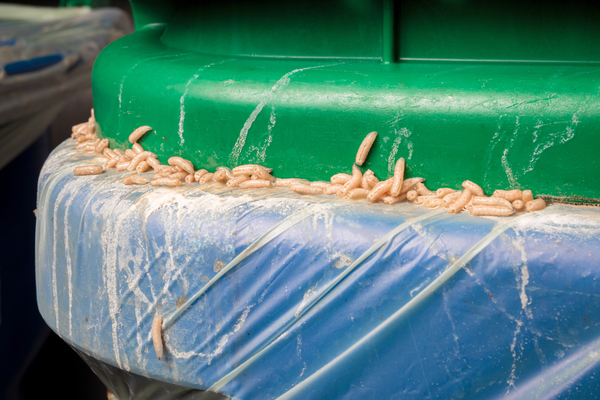
If there’s a fly infestation in a hoarder house then maggots are already present. This is because food sources are openly and permanently available.
To ensure survival, flies will only lay eggs in places that provide immediate and consistent dead tissue for their larvae to eat. Because many hoarding areas always have rotting food or waste present, they’re the perfect places for flies to swarm.
Although they don’t spread disease by contact, hoarders may be eating maggots if they are eating expired food, whether knowingly or unknowingly.
For the most part, eating maggots is harmless. They are simply bug larvae. The reason they are considered so disgusting, though, is because they only feed on dead tissue. So if you’re eating maggots that are feeding on something, you’re at risk for the illnesses associated with eating expired food.
Sometimes maggots harbor their own diseases from the food their mothers consumed. Since flies spend their days flying from surface to surface, they have the potential of picking up a variety of harmful bacteria. They will then transfer the bacteria to their larvae.
How Professional Cleaners Remove Pests
In addition to deep cleaning and sanitation after a hoard clean-up, professional cleaners will need to assess and treat pest infestations before the job is complete. This is why hiring a professional is so important.
Non-professionals do not know the necessary procedures or have the proper equipment to clean deep enough to eliminate all pests.
 Attention to detail is what makes the difference between professionals and non-professionals. Pests will come back if their entryways aren’t closed and there is still food, water, and shelter available to them. Sealing and sanitizing are the only ways to fully clear them out.
Attention to detail is what makes the difference between professionals and non-professionals. Pests will come back if their entryways aren’t closed and there is still food, water, and shelter available to them. Sealing and sanitizing are the only ways to fully clear them out.
Once the room has been cleaned thoroughly, professional cleaners will apply pesticide to keep pests from coming back.
You can trust them to use safe and government-approved formulas in your house. It is not recommended to apply pesticide on your own after a hoard clean-up because it requires so much more work and thoroughness than a normal pest problem. It’s best to leave it to the experts in an extreme situation like a hoard.
Wrapping Up
Deep within the mass of items, pests of all kinds lurk and take advantage of the abundant resources available to them. Without treatment, infestations in hoards will only get worse and the risk of damages and illnesses will increase along with it.
The health hazards involved with a pest infestation can be extremely dangerous to humans and pets.
Rodents are notorious for spreading hantavirus pulmonary syndrome through their waste. Cockroaches increase the risk of asthma attacks, especially in children. Flies carry bacteria like tuberculosis and cholera.
And although these risks are present in any normal place with a pest infestation, hoarding situations dramatically increase them because the sheer number of pests can overwhelmingly contaminate objects and surfaces. And if the hoarding isn’t cleaned up, the pests will only multiply.
When cleaning a hoard, special measures must be taken to ensure the area is free from pests for the long term. Only then will the risk of contamination and structural damage disappear and the area be deemed safe again.

